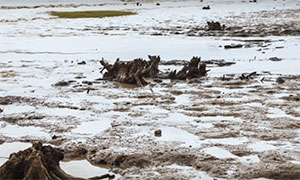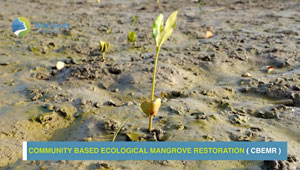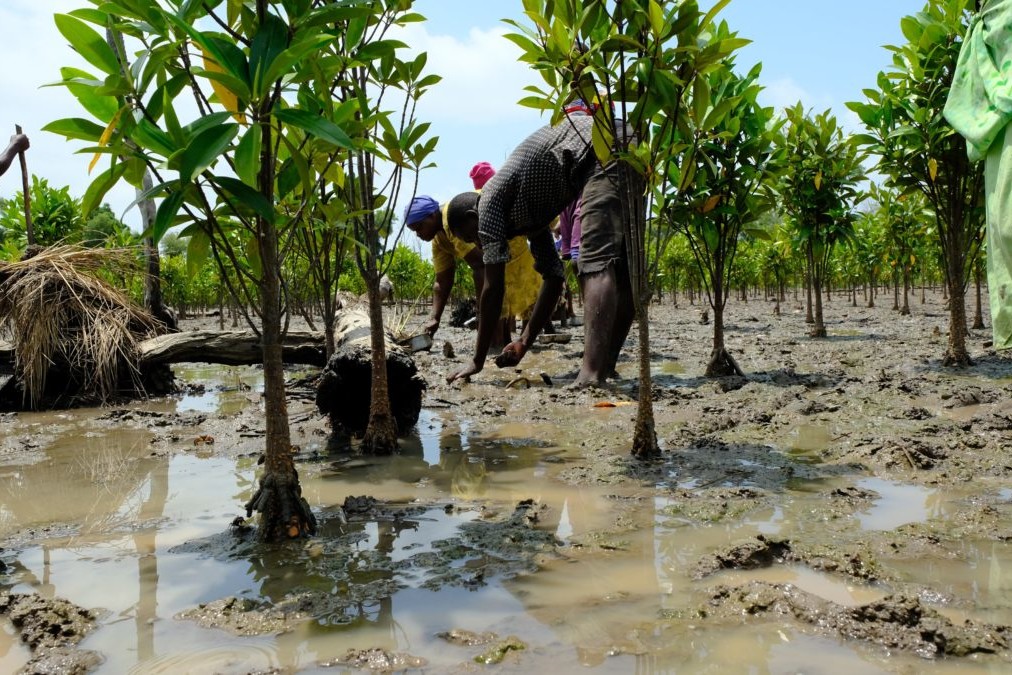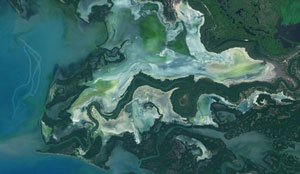The MAP News
|
|
| FEATURED STORY The Mangrove Breakthrough: a call to action for a critical ecosystem
 GLOBAL - The Global Mangrove Alliance (GMA) in collaboration with the UN Climate Change High-level Champions have identified the need for a unified global approach towards mangrove conservation and are therefore calling for signatories to the “Mangrove Breakthrough” being launched today at COP27. The Mangrove Breakthrough is a science-based, measurable, and achievable goal for non-state actors and governments to collectively restore and protect mangroves at the scale needed to secure the future of these vital coastal forests. This will be achieved by catalyzing financial flows to broadly activate proven solutions and mobilize action on the ground as part of the Sharm El Sheikh Adaptation Agenda—a key roadmap to deliver on the Race to Resilience. Specifically, the Mangrove Breakthrough aims to secure the future of 15 million hectares of mangroves globally by 2030. Current signatories to the breakthrough include Global Mangrove Alliance members, the Ocean Risk and Resilience Action Alliance (ORRAA), and Salesforce, among many others. By joining the Mangrove Breakthrough, signatories recognize the need and show a willingness to achieve a future where these critical ecosystems are restored and protected. The Breakthrough will channel finance at scale to ensure funding for both global and local initiatives aimed at protecting and restoring these coastal forests. “As we work together to scale up financial contributions for mangrove action through the Mangrove Breakthrough, it will be equally critical that we underpin these investments with scientifically robust restoration best practices and safeguards,” said Stewart Maginnis, Deputy Director of IUCN. READ MORE GLOBAL Among the mangroves, Biden cultivates diplomacy  GLOBAL - President Joe Biden capped off a consequential week of meetings with his foreign counterparts abroad – in which discussions centered on Russia’s ongoing war in Ukraine, climate change’s existential threat to the Earth and a pandemic that has unleashed food, energy and economic crises across the globe – with a final symbolic gesture in Bali. He planted a mangrove tree. The mangrove tree represents strength, resilience and stability in the face of adversity. So it appeared fitting that in the final hours before boarding Air Force One to return home, the president – surrounded by the leaders of some the United States’ most important allies – helped lower mangrove tree saplings into the earth. READ MORE AFRICA Senegal oyster growers fend off rising seas with mangroves 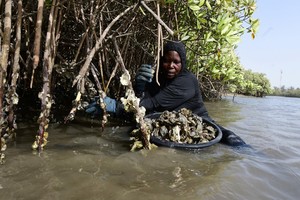 SENEGAL - WAIST-DEEP in brown water, Maria Ndong inspects a cord with rugged oysters clinging to it just below the surface. She raises a knife and cuts the string, slick with algae, measuring her catch before flinging it onto the deck of a nearby boat. As recently as a decade ago, the oysters would have been stuck to the roots of the dense mangroves that cover this corner of southern Senegal’s roughly 5,000-sq-km Saloum Delta. Then, Ndong and the other women of her village, Dassilame Serere, would have cut the tree itself to harvest the mollusks that are their livelihood. But three years ago, Ndong and her fellow villagers began replanting the mangroves, which were overexploited for decades by villagers seeking firewood, farmland or oysters, and have been battered by rising seas caused by climate change. The mucky, tangled forests of the West African coast absorb and blunt storms, nurture a diverse range of life — including young fish, crabs and shorebirds — and store vast amounts of carbon in their root systems. For the villagers of Dassilame Serere, the mangroves offer protection against the rising tide and the crashing waves that eat away at Senegal’s coastline. “Without the mangroves, the animals would disappear, and so would we,” says Ndong, 40. READ MORE Rising Sea Levels Besieging Africa’s Booming Coastal Cities 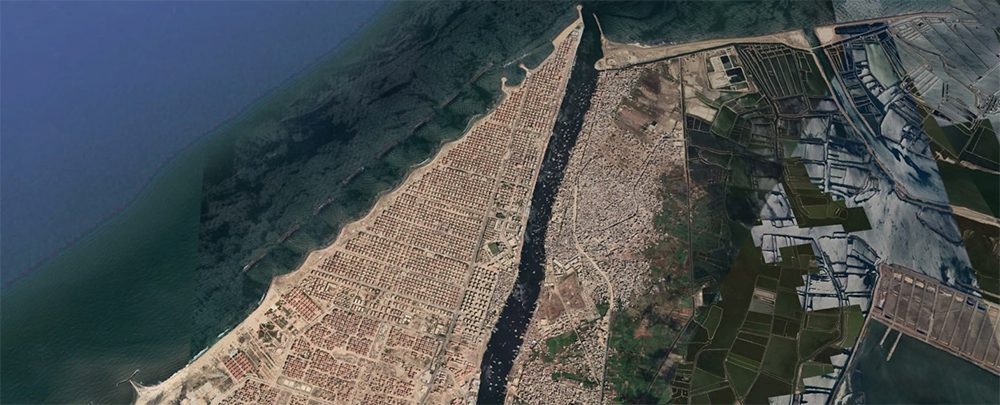 AFRICAN COAST - Africa’s coastal cities are facing converging crises—rising seas, rapidly growing populations, land pressure, and an affordable housing shortage. These crises are compounding one another as people are pushed to settle farther into the wetlands and shorelines surrounding cities, exposing these settlements to storm surges and flooding while weakening the protection these natural barriers and ecosystems provide the entire city. Mitigating the effects of rising seas, therefore, will require simultaneously addressing other sources of vulnerability (such as balancing between high-end developments that displace residents and affordable housing options). The Global Center on Adaptation has implemented rapid climate risk assessments (RCRA) in five cities, including the coastal cities of Bizerte (Tunisia), Conakry (Guinea), and Libreville (Gabon). Some of the most cost-effective measures for reducing loss and damages from extreme weather events generated from these RCRA’s include investing in water and sanitation infrastructure, restoring wetlands and ecosystems to reduce flood risks, and strengthening disaster evacuation planning. Instead of investing in expensive and maintenance-heavy infrastructure projects to defend against storm surges, many African coastal cities might choose the nature-based solution of restoring mangroves, dunes, seagrasses, wetlands, and other costal ecosystems. READ MORE East Africa should promote renewable energy, not oil pipelines  TANZANIA - On October 18, 2022, Ugandan President H.E. Yoweri Kaguta Museveni delivered a keynote address during African Energy Week which took place in Cape Town, South Africa between October 18 and 21. During his address, President Museveni discussed the September 14, 2022 European Parliament resolution that urged TotalEnergies to stop development of the East African Crude Oil Pipeline (EACOP) project for a year while studying an alternative route that is less environmentally- and socially-destructive. The EACOP is a planned 1,443 km pipeline that is expected to be built between oil fields in western Uganda to the port of Tanga in Tanzania. At peak production, the pipeline is expected to transport 216,000 barrels of crude oil per day. Construction of the pipeline is yet to commence. Independent calculations done by scientists from Environmental Law Alliance Worldwide-USA showed that the end-user or product use emissions (Scope 3) of the EACOP are over 34.3 million metric tons of carbon per year at peak production. This is equivalent to emissions from nine coal fired power plants. READ MORE Seychelles to Protect 100 Percent of Mangroves and Seagrass in 2023, Says President At COP27 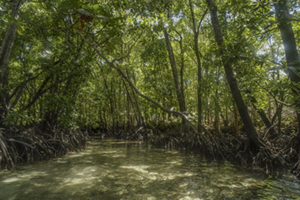 SEYCHELLES - Seychelles will move to 100 percent protection of all its mangroves and seagrass meadows in 2023, adding to the already 32 percent protection of its ocean and 50 percent of its forest, President Wavel Ramkalawan said on Monday. Ramkalawan made the announcement in his statement at the high-level segment for heads of state and government in the 27th Conference of the Parties (COP27) taking place in Sharm el-Sheikh, Egypt. "Like other islands, we contribute less to the destruction of the planet, yet we suffer the most. For example, the carbon emissions of Seychelles are very low, and we clean up through our mangroves and seagrass meadows, thus making us a zero contributor to the destruction of the planet, yet our islands are disappearing and our coasts are being destroyed," he said. Seychelles has one of the most biologically diverse marine ecosystems on the planet while the carbon ecosystems cover over two million hectares, with seagrass beds accounting for 99 percent of the blue carbon extent. The other carbon ecosystem in the island nation is mangrove forests with more than 80 percent located within the Aldabra atoll. READ MORE AMERICAS Jamaica’s Mangroves Worth Millions 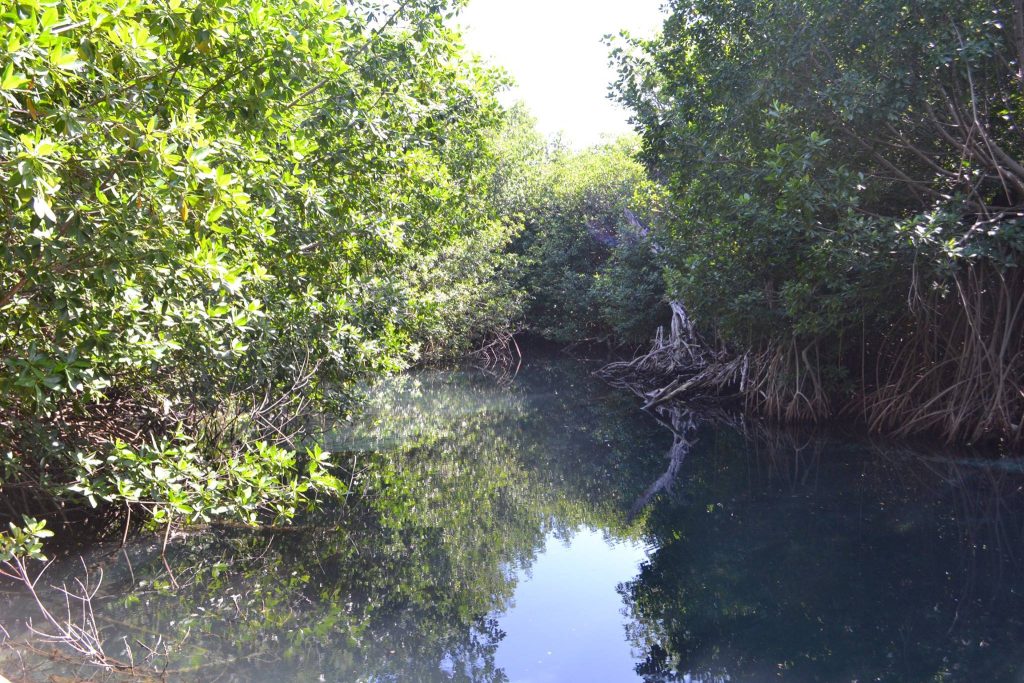 JAMAICA - Mangroves, the groups of trees and shrubs that line Jamaica’s coastlines, hold significant value not only in protecting and sustaining the lives and livelihoods of citizens along the coasts but also in real economic terms. It is estimated that these wetland forests are worth hundreds of millions of dollars. A report on Jamaica’s mangroves, launched in 2019, estimate that they provide approximately US$32.7 million in protection to Jamaica’s heavily settled coastline areas. The study, funded by the Program on Forests (PROFOR) through the World Bank, found that without mangroves, the estimated damage from flooding would be US$169 million annually. When the protection of approximately US$2.4 billion in assets (people and infrastructure) during storms is factored in, the value of mangroves is more than US$186 million per hectare. Director for the Centre of Marine Sciences at the University of the West Indies (UWI) Mona Campus, Professor Mona Kay Webber, tells JIS News that the value of mangroves is directly related to what they protect. READ MORE ASIA Certain mangrove species may disappear from India’s east & west coasts  INDIA - According to a study based on a prediction model, certain mangrove species in Chilika and Sundarbans on India’s east coast and Dwarka and Porbandar on India’s west coast are likely to decline and shift landward by 2070 due to declines in suitable habitats in response to precipitation and sea level changes. The study can help identify highly suitable areas for conservation and management, as well as develop future conservation strategies. Mangroves provide numerous ecosystem services and aid in the reduction of coastal ecological risks, but they are one of the most critically endangered ecosystems, declining rapidly as a result of climate change, sea level fluctuations, and human activity. Many conservation initiatives along the Indian coastline have failed due to a lack of understanding of mangrove spatial distribution and species habitat requirements. This highlights the critical need for model-based studies to identify conservation target areas at Spatio-temporal scales, particularly along the Indian coastline’s rich mangrove biodiversity. READ MORE OCEANA Goals for mangrove recovery must be based on science  AUSTRALIA - A rapid scale up in mangrove restoration is required if the Australian Government hopes to reach the goals of a recently announced partnership with the Mangrove Alliance for Climate. “This week at COP27 the Australian Government announced that it will join the Mangrove Alliance for Climate, along with United Arab Emirates and Indonesia, who have goals of a global 20% increase in mangrove habitat by 2030,” said Associate Professor Chris Brown from the Australian Rivers Institute and the Coastal and Marine Research Centre and a lead researcher with the Global Wetlands Program. “Conservation targets need to be both ambitious, so that they inspire the urgent actions that life on earth needs, and also scientifically credible, so that that action is tangible and achievable. Unfortunately, the 20 per cent target lacks the latter, it has no scientific basis.” The government’s Mangrove Alliance for Climate 20% target of mangrove restoration seems to be based on the initial target of the Global Mangrove Alliance, an alternate collaboration NGOs, governments, scientists, industry, local communities, and funders. READ MORE Like this newsletter? *Articles in this newsletter may mention practices being used and/or show exagerated results being claimed without proof. Stories are presented here in effort to show mangrove related activity around the world and do not necessarily reflect Mangrove Action Project's views or mangrove restoration best-practices. |
NOTICEChildrens Art Calendars 2023
ORDER YOURS HERE
ACTION ALERTS
|
|
Mangrove Action Project Click here to view past newsletters
|
|
Search News Archive
Saturday, November 19, 2022
MAP News Issue #559 - Nov 19, 2022
Saturday, November 5, 2022
MAP News Issue 558 - Nov 5, 2022
The MAP News
|
|
| FEATURED STORY Crocodile close-up in Cuba wins photo awards
 GLOBAL - Run by the Mangrove Action Project, the competition - now in its eighth year - aims to show the relationships between wildlife, coastal communities and mangrove forests, as well as the fragility of these unique ecosystems, both above and below the waterline. Gardens of the Queen is an archipelago off the coast of Cuba and has been strictly protected since 1996. It is one of the most untouched marine ecosystems in the world. "The healthy population of American crocodiles is down to the pristine condition of the mangroves, and I wanted to capture close-ups of this gentle giant in its natural habitat," said Ms Houppermans. "I hope this image can illustrate that protecting areas like this is so critical." Mangroves are an important protection against climate change, with one acre (4,000sq m) of mangrove forest absorbing nearly the same amount of carbon dioxide as an acre of Amazon rainforest. The forests also protect coastlines from eroding, as intense storms grow more frequent. "The Mangrove Photography Awards has become a platform to intrigue people about the magnificent ecological role mangroves play in all of our lives", said judge Dhritiman Mukherjee. Fellow judge Octavio Aburto added: "The images from this year captivated our imagination.... giving us hope and illuminating a positive future for mangrove ecosystems." READ MORE GLOBAL Restoration “Playbook” calls for political, economic, and social change  GLOBAL - International forest and climate experts have a “playbook” for ecosystem restoration with a set of 10 principles that they say, if followed, could be a game-changer. The Political Ecology Playbook, published in the journal Global Environmental Change in Nov 2021, recognizes that issues such as climate change and forest loss are not just biophysical and environmental problems, but are also deeply political, economic and social. The playbook was written to support the U.N. Decade on Ecosystem Restoration (2021-2030). Many of the ideas in it are already embedded in the U.N.’s language and framework, such as integrating Indigenous knowledge and practices into ecosystem restoration initiatives. However, according to the authors, this is the first time all of these principles have been laid out in a published playbook format, calling for action. “Restoration is often seen as a quick fix to repair ecosystems after making mistakes,” said Robin Chazdon, a professor at the University of the Sunshine Coast, Australia, and one of the article’s nine authors (who happen to all identify as women). “But it is even more important to recognize these mistakes and avoid repeating them, as they also perpetuate social inequities.” READ MORE AFRICA Renewable energy powered ovens help Cameroon fish smokers curb mangrove forest degradation 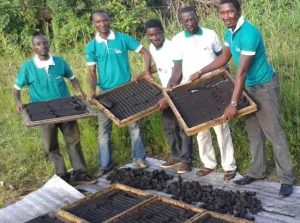 CAMEROON - Local councils, NGOs and other stakeholders are backing government’s efforts to protect mangroves with the use of alternative energy other than fuel wood for cooking and drying fish by the local communities. In the coastal towns of Batoke, Idenau fish traders are doing brisk business thanks to the installation of solar-powered ovens to dry fish, preventing what used to be massive destruction swathes of mangrove forest for firewood and spoilage from a lack of other preservation methods. Fish smokers in these communities say the renewable energy project has improved on their awareness and knowledge about mangrove protection. “We have come to learn about this new method that permits us dry our fish without much stress with the use of solar ovens and protect our forest,” says Joan Dione, a fish smoker in Idenau whose business is driven by customers from big cities in Cameroon and neighbouring Nigeria and Gabon. READ MORE Low-cost adaptation options to support green growth in agriculture, water resources, and coastal zones WESTERN AFRICA - The regional climate as it is now and in the future will put pressure on investments in sub-Saharan Africa in water resource management, fisheries, and other crop and livestock production systems. Changes in oceanic characteristics across the Atlantic Ocean will result in remarkable vulnerability of coastal ecology, littorals, and mangroves in the middle of the twenty-first century and beyond. In line with the countries' objectives of creating a green economy that allows reduced greenhouse gas emissions, improved resource efficiency, and prevention of biodiversity loss, we identify the most pressing needs for adaptation and the best adaptation choices that are also clean and affordable. According to empirical data from the field and customized model simulation designs, the cost of these adaptation measures will likely decrease and benefit sustainable green growth in agriculture, water resource management, and coastal ecosystems, as hydroclimatic hazards such as pluviometric and thermal extremes become more common in West Africa. Most of these adaptation options are local and need to be scaled up and operationalized for sustainable development. Governmental sovereign wealth funds, investments from the private sector, and funding from global climate funds can be used to operationalize these adaptation measures. Effective legislation, knowledge transfer, and pertinent collaborations are necessary for their success. READ MORE AMERICAS PODCAST: Protecting Paradise - Mangrove Action Project: Cassandra MacDowell  CAYMAN ISLANDS - This week we chatted with Cass MacDowell from the Mangrove Action Project and Rangers! Mangroves play a massive role on our islands and we are going to learn all about how and why we should protect them! To learn more about the program, go to their website: https://www.mangroverangers.ky And follow them on all social media @mangroverangersky Thank you to BOBO 89.1 FM and our silent sponsors, and remember you can't care if you don't know! LISTEN HERE Dirty shrimp farms are punching a huge hole in the environment. A.I. could cut it in half  USA - Inside a humid warehouse in suburban Indianapolis, a company called Atarraya is using large metal containers and the latest technology to grow shrimp hundreds of miles from the ocean. At one end of the hangar-like building sit blue metal boxes that look similar to shipping containers. But instead of holding cargo for transport, they’re designed to grow Pacific whiteleg shrimp anywhere in the world, overseen by employees who don’t require specialized training. “The software does all the heavy lifting,” Daniel Russek, CEO of Mexico City– and Indianapolis-based Atarraya, tells Fortune during a tour of the company’s newly launched U.S. operation, which includes a small office building and a warehouse that it plans to fill with 20 of the micro shrimp farms. The software Russek refers to is cloud-based artificial intelligence that monitors water quality, regulates temperature and oxygenation, and feeds the shrimp. For Russek, the concept is a bet that Atarraya will be able not only to sell locally grown seafood itself but also to franchise its Shrimpbox technology to seafood distributors or farmers, whether they have aquaculture experience or not. READ MORE ASIA Caring for mangroves is just as important as restoring them 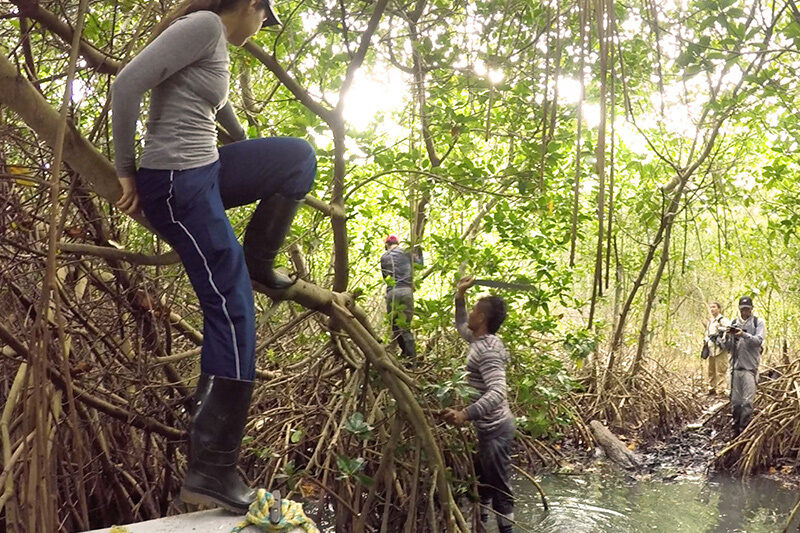 INDONESIA - Indonesia is betting big on mangrove restoration in its contribution to global climate change mitigation, but experts say conservation will be just as essential if not more important in maximizing the role of mangroves in mitigating climate change. President Joko “Jokowi” Widodo is aiming to restore up to 600,000 hectares of mangroves by 2024, citing mangroves’ capacity to absorb more carbon than terrestrial forests thus strengthening the country’s commitment to reducing emissions under the Paris Agreement, among other ecological and economic benefits. Jokowi put the Mangrove and Peatlands Restoration Agency (BRGM) at the helm of the initiative. Restoring mangrove forests larger than the size of Bali island is a “laudable move”, but conservation is just as important due to the huge risk of mangrove deforestation, said Virni Budi Arifanti, a forestry researcher at the National Research and Innovation Agency’s (BRIN) Research Center for Ecology and Ethnobiology. READ MORE This mangrove reforestation project shows how technology can scale nature-based solutions 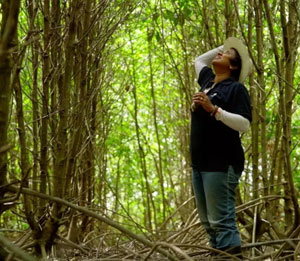 MALAYSIA - When it comes to addressing the climate crisis, this is the decade of action. The private sector must work alongside the government and society to deliver bold solutions to halve global emissions by 2030. Now is the time for collective efforts that make a real impact. According to WWF, evidence increasingly suggests that nature-based solutions – natural systems or processes used to help achieve societal goals – could contribute significantly to minimizing climate change and its effects. In fact, research shows that nature-based solutions and the broader land sector could contribute up to 30% of the climate mitigation needed by 2050 to meet the Paris Agreement’s objective of limiting global warming. In Malaysia – where we have operated for over 50 years – we understood that mangroves were absolutely critical to the ecosystem. READ MORE EUROPE First evidence that black mangroves can produce twins 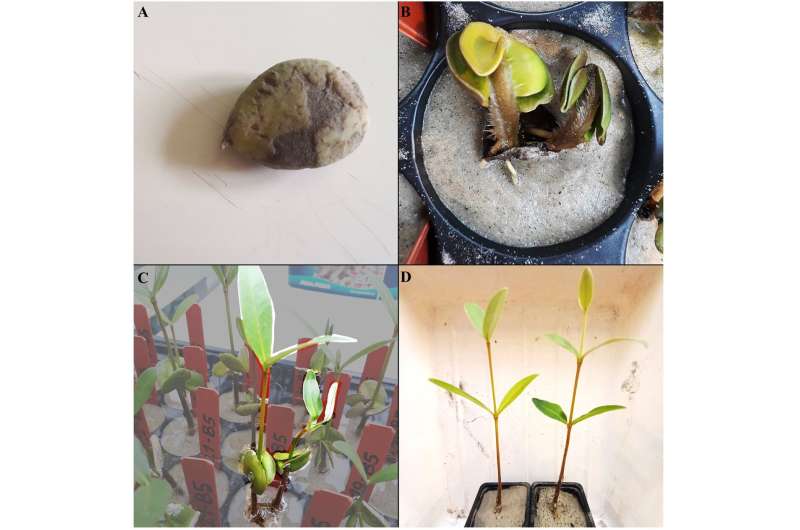 NETHERLANDS - Researchers at Wageningen University & Research have discovered that black mangrove trees can produce twins. While the phenomenon of twin seedlings was seen before in other mangrove species, this is likely the very first time it was observed in black mangrove trees. In the tropical plant nursery in Wageningen several researchers of the Netherlands Earth System Science Center (NESSC) work on growing mangrove trees and tropical seagrasses. In this way, they study the interactions between tropical habitats increasingly affected by climate change and climate-driven anthropogenic pressures. While germinating several black mangroves seeds, NESSC scientists Sara Pino Cobacho and Marjolijn Christianen noticed an extremely rare phenomenon: single mangrove seeds that produced multiple seedlings—or twins. READ MORE OCEANA Socio-economic factors shown to drive mangrove losses and gains 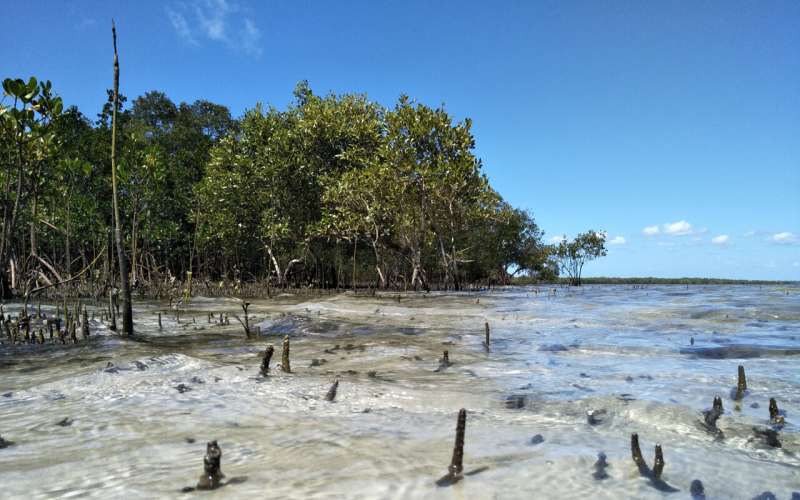 AUSTRALIA - New research into the drivers of mangrove loss over the past 20 years has revealed that most of the degradation can be attributed to socio-economic and biophysical factors, with mangrove cover increasing in some areas. The University of Queensland-led study calculated the change in mangrove cover across coastlines around the world over the past two decades, and is the first look into how local economic pressures, national governance, and conservation policies impact mangrove losses and gains, and how this has changed over time. "Mangrove forests store high amounts of carbon and protect communities from storms, while also supporting fisheries and playing an important role in local economies," researcher Dr. Hagger said. "To date the main cause of global mangrove loss has been from human land-use impacts associated with conversion to aquaculture ponds, agriculture, and urban development. "What's most surprising is that, while in most instances of economic growth you'll find habitat loss and degradation, this study found the opposite. READ MORE Like this newsletter? *Articles in this newsletter may mention practices being used and/or show exagerated results being claimed without proof. Stories are presented here in effort to show mangrove related activity around the world and do not necessarily reflect Mangrove Action Project's views or mangrove restoration best-practices. |
NOTICEChildrens Art Calendars 2023
ORDER YOURS HERE
ACTION ALERTS
MAP Website en Español 13 Year old Linda Li "Mangrove Adventure" from Kid Dream Art School
Video: Mangroves for the Future WANT TO GET INVOLVED?
Like this newsletter? Pease consider donating to MAP to keep it going. Giving could never be easier
Interested in connecting or working with MAP? Check out our opportunities here MANGROVE ISSUES Want to learn more about mangroves? What is CBEMR? Download MAP's 2 page CBEMR Information Sheet containing links to all MAP's CBEMR resources – CLICK HERE View MAP’s uploaded Videos at Question Your Shrimp Consumer/Markets Campaign! Mangroves: Guidebook to Malaysia – Click Here SHARE MAP'S VISION Our short documentary, Reducing the Risk of Disaster through Nature-Based Solutions : Mangroves
Marvellous Mangroves Curriculum The Marvellous Mangroves Curriculum begins with a simple philosophy – getting future generations to not only learn about, but understand the importance of mangrove forests. VISIT
Marvellous Mangroves Curriculum in Bangladesh - WATCH VIDEO
Like this newsletter? Pease consider donating to MAP to keep it going. Giving could never be easier
"Question Your Shrimp" Campaign Question Your Shrimp - is it really sustainable? Sign the Petition
We strive to keep active links in our newsletter. However, due to circumstances beyond our control, occasionally links to stories may become broken. If you find a link to a story is not functioning, please cut and paste the headline into your browser search bar. In most cases you should be able to locate the original story. Not yet a MAP News subscriber?
|
|
Mangrove Action Project Click here to view past newsletters
|
|
-
The community of adults and youth in Cayman Islands has come together recently to release a series of educational videos. Each is geared to...
-
By Alfredo Quarto, Program & Policy Director Co-founder, MAP There is a rather urgent situation concerning the bio-invasion of the Son...
-
By: Isabel Robinson, MAP Volunteer Intern Some months ago I decided to come to Thailand and do an internship in mangrove conservation, ...
MAP News Issue #596 = April 20, 2024
ENTRIES NOW OPEN! Mangrove Photography Awards 2024 10 Years Celebrating Mangroves GLOBAL - MAP has launched our 10th Mangrove Photograp...







